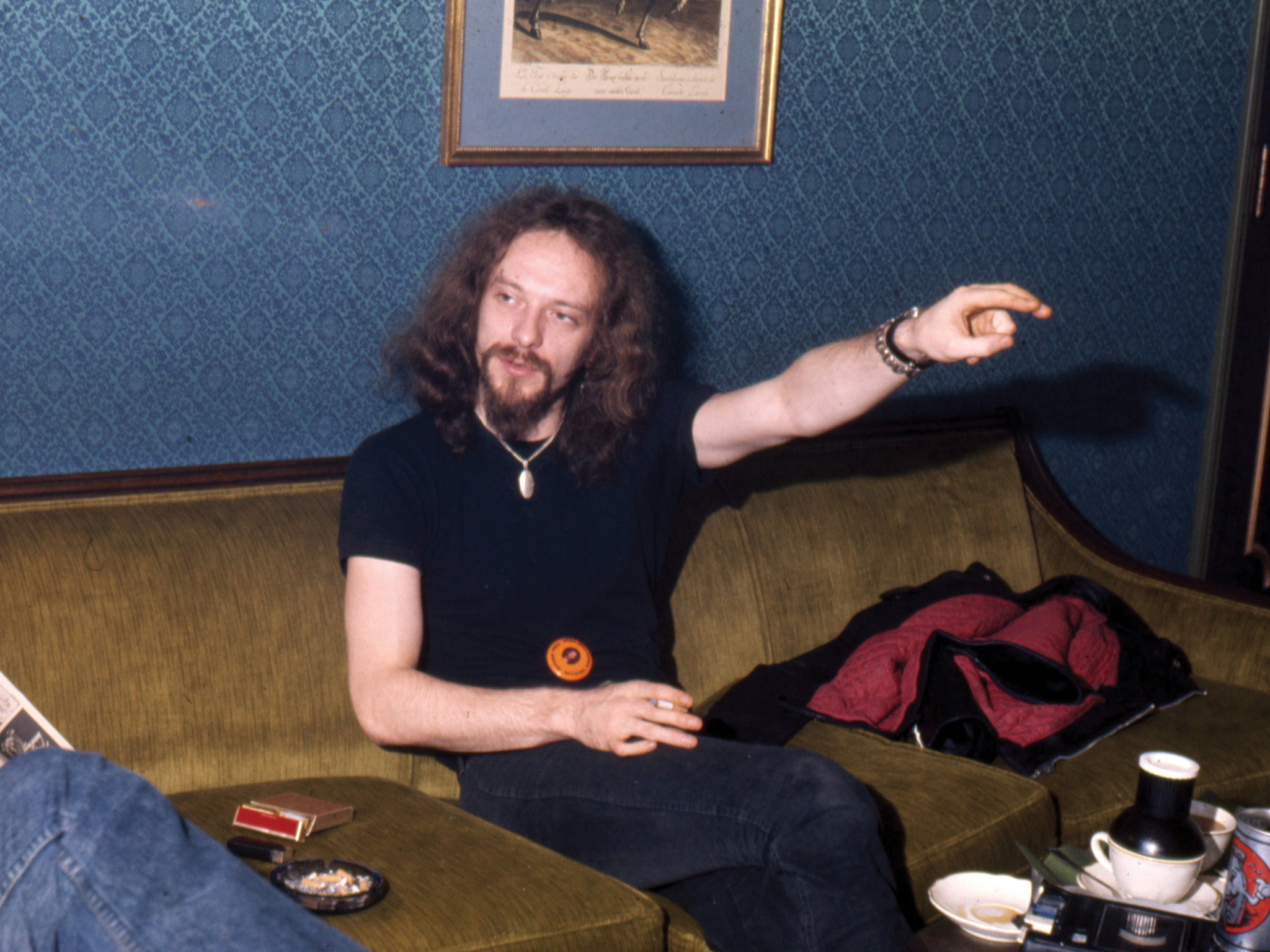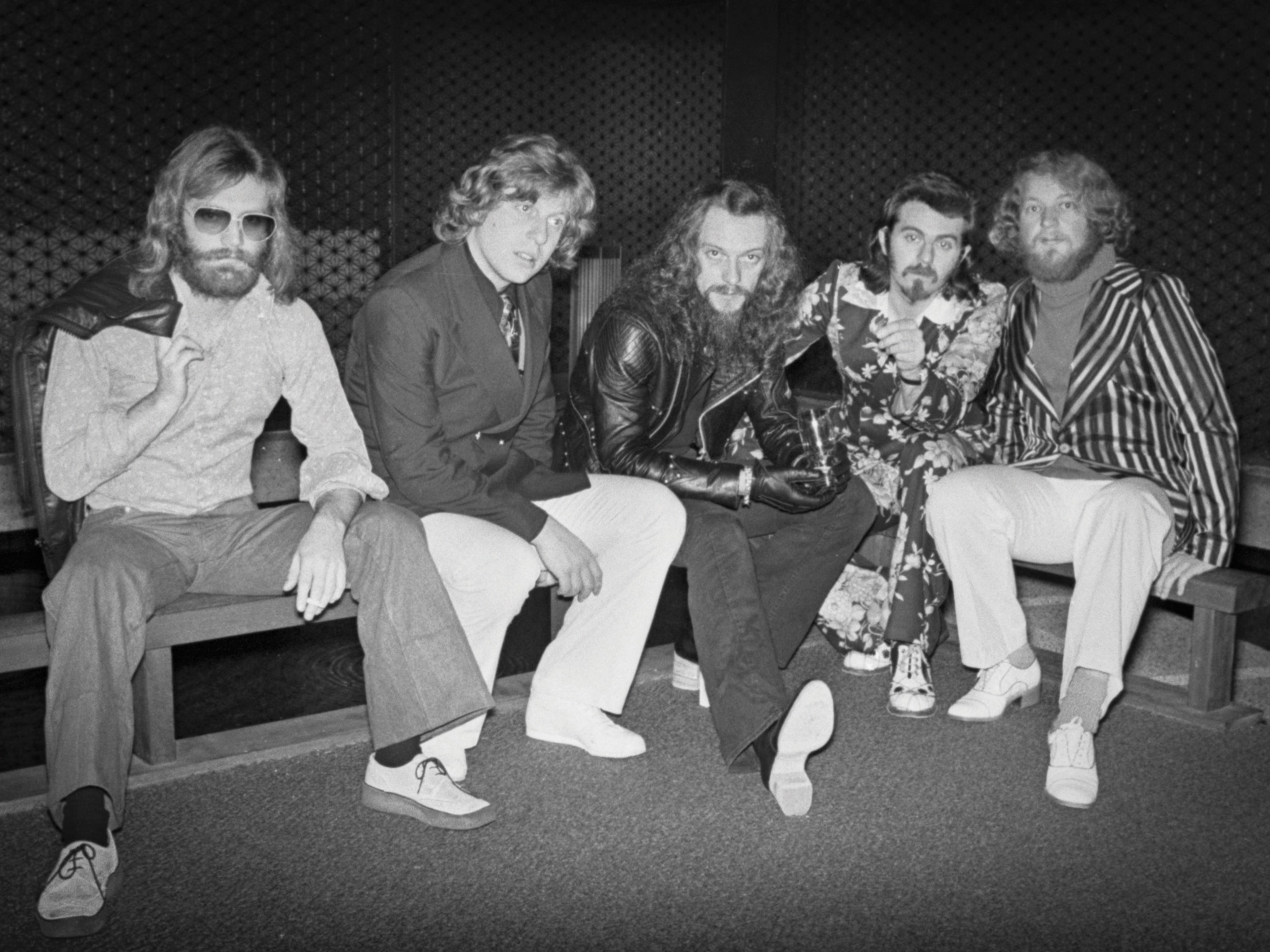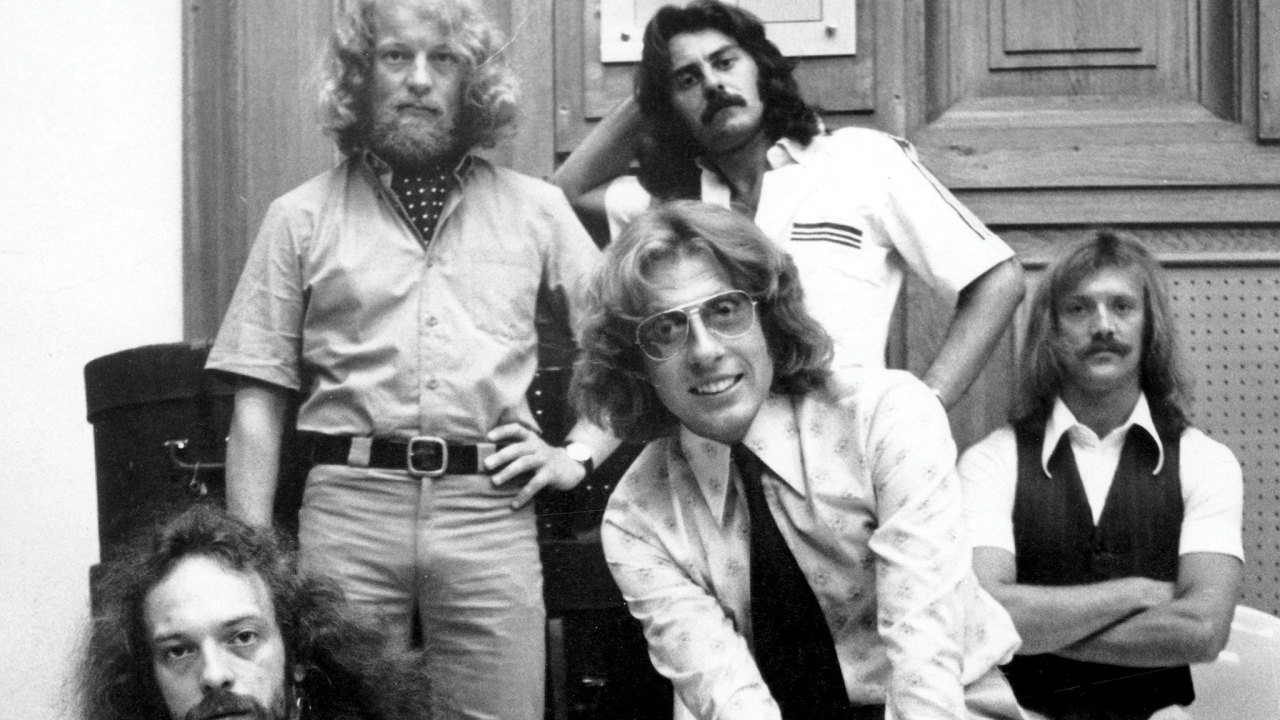Prog joins Ian Anderson in looking back to 1975 and the creation of the album… Despite the huge successes and critical acclaim that they had enjoyed over the previous few years, 1975 was a strange one for Ian Anderson and Jethro Tull.
While still very much at the top of their commercial game and as a popular as ever on both sides of the Atlantic, the band’s most recent albums, A Passion Play (1973) and ’74’s War Child, had been greeted with an unexpectedly mixed response from the same critics that had previously praised Aqualung and Thick As A Brick to the rafters. While the big tours and solid chart positions continued, the sense that a change of tack was in order hung in the air.
As ever, Anderson’s response was to stick to his own instinctive path. But logistical factors undoubtedly came into play as Tull prepared to record their eighth studio album, Minstrel In The Gallery. As was fairly common in those days of political calamity and extraordinarily high domestic tax rates, Jethro Tull decamped elsewhere, with their new mobile recording studio, to piece the record together; specifically, to the idyllic, sun-kissed streets of Monte Carlo in the south of France.
“The most obvious reason was that friends of friends had directed us to a Monte Carlo studio, an old radio studio from the 20s or 30s that was huge and basically never used,” Anderson recalls today. “It had the facilities and the car park behind it, so we could park the mobile and run cables up into the big soundproofed radio studio. It had no equipment, just a big soundproofed empty room. Meanwhile, accountants at the time recommended that it was the place to go to reduce the tax liability from recording. We didn’t actually benefit from any tax deduction by working there, but The Rolling Stones and others were all fleeing Britain to go and work abroad, so that was the mood of the times.”
In keeping with this geographical switch, Anderson also chose to alter the band’s way of working, making a partial return to the methods that had made 1971’s Aqualung such a distinctive and powerful record. Operating almost as a lone-gun singer-songwriter, Tull’s head honcho set up base at the studio, summoning his colleagues as and when their input was required. But this was no petulant power grab. Instead it was simply what was required to best serve the songs that Anderson had been writing over the previous 12 months.
“The album was written largely in hotel rooms on tour, and mainly on American tours,” he explains. “It was largely a singer-songwriter approach by necessity, because we were either on tour as a band or we were scattering to the winds as soon as we got off the plane at Heathrow. So coming up with the album was rather solitary. In some ways it employed some of the things that began on the Aqualung album, four or five years before, with some songs that were just me in the studio and the other guys added a bit or a string quartet came in or whatever it might be.”
By this stage in the Jethro Tull story, few observers had any doubt that this was Ian Anderson’s band. However, this return to a more solitary way of working can hardly have had a positive effect on the unit’s morale or interpersonal harmony, even though a more fractured approach to making an album was arguably exactly what they needed after spending so much time together on the road.
“Well, yes, although it wasn’t an unsavoury experience,” Anderson laughs. “But it split us up somewhat because I’d be in the studio during the day, working as a performer and as a producer, and the other guys were there only half the time or not even that. I think it was probably, for them, a little stop-start and not the best way of working, but, looking back on it, it was really justifying the decision I’d taken to build a mobile recording studio. We had the means and we were going to work that way.”

With major events in the evolution of Jethro Tull’s line-up lurking over the horizon – Minstrel In The Gallery would be the last album to feature bassist Jeffrey Hammond – the new material could easily have come across as chaotic, but the reality of Minstrel… is that it is one of Tull’s most robust and convincing albums of the 70s, not least to the greatly enhanced fire and fury of those ensemble performances that did make the final cut.
The album’s opening title track, in particular, showcased a band very much in tune with one another; a powerhouse group performance that reflected the muscle and verve that the band were now routinely displaying onstage. Lyrically, however, the song was a rather acerbic study of the jobbing musician’s life.
“It’s just a cynical, slightly immature reaction to being the wandering minstrel, the travelling musician in far off lands, particularly in America, and sometimes resenting the demands of the audience,” Anderson elucidates. “In the same way that a minstrel in a medieval court was very much at the mercy of the duke or the king who, if he didn’t like what he was playing, would chop his head off.
“So in a way I felt that kind of obligation to deliver the goods that had been pre-ordered by the audience that had bought the tickets. I was definitely bitching and moaning! Even at the time of writing I probably felt faintly embarrassed about what I’d written, and it did sound a little ungrateful, because the large majority of the audiences were very supportive, but it only takes a couple of drunks egging each other on, somewhere in the back, to spoil it for everybody.”
The undeniable centrepiece of Minstrel… was the four-part Baker St. Muse, a rambling but keenly observed wander through the streets of our nation’s capital, and one area of North London in particular. Not only a reminder that Tull were masters of prog’s long-form approach, it was Anderson’s most impactful study of real life minutiae to date, reaffirming his status as a songwriter with an eye for detail and a quiet sense of detachment from the hubbub that so frequently surrounded him.
“It’s a series of quite separate little vignettes, separate observations of the streets of London, or the particular part of London that I regarded as my bit of London, as I still do today, the square mile of Marylebone,” he explains. “London was always a wonderfully rich place, with people of different cultures, backgrounds, colours, creeds and headgear but I liked the anonymity of living somewhere not too far from a railway station. I don’t think I would have been motivated to write that if I’d set it a target to write a song called, say, Wimbledon. Let’s leave that to Mike Batt.”
Another obvious highlight from the Minstrel sessions, Cold Wind To Valhalla neatly encapsulated the minor disconnect that was emerging between Anderson’s intense creative focus and the more primal and instinctive approach of Tull’s live incarnation. At first a tender, folk-tinged affair, it erupts halfway through into a red-blooded storm of bombast, apparently partly inspired by the band’s adventures on the road as touring partners with a certain Captain Beefheart And His Magic Band; an experience that had also given Anderson some fresh insight into how best to keep his own show on the road.
“Cold Wind… reaches the halfway point and suddenly the band come in like dropping a sack of potatoes onto half a dozen organic eggs, and the result is not dissimilar,” Anderson laughs. “Looking back, it seems a contradiction to have this sudden crash into a Captain Beefheart thing, with searing guitars and thundering drums, but two or three of us were particularly enamoured with the Magic Band.
“Beefheart was a brilliant writer of wordplay lyrics, but as a musician, he was a charlatan and a fake and a very difficult, powerful and manipulative man, deeply insecure and in denial about a lot of things. He’d lost touch with the musicians and I suppose that served as a reminder to me, that I had to try and keep people onside and involve them in things, even though I was coming up with the raw material.”
Released on September 5, 1975, Minstrel In The Gallery was another chart success for Jethro Tull. More importantly, it was a record that signalled the end of the Jeffrey Hammond era and the beginning of a restructuring of the band’s core aesthetic that would lead them to the folk-rock futurism of _Songs From The Wood _and Heavy Horses. From a fan’s perspective, the album’s fulsome re-release in 2015 gives everyone a chance to reassess the invigorating dark horse of Tull’s first decade, wherein change, consolidation and a dash of Beefheartian clangour combined with dazzling results.
“I’ve no idea about the fans, but I would put it somewhere near the bottom of my top 10 Jethro Tull albums,” Anderson notes. “I think my own playing and singing on it were pretty good by my standards. As to its impact on other people, I don’t think it was a particularly successful Jethro Tull album. It was a bit less successful in America, perhaps, and fared a little better in Europe. But our albums didn’t generally sell tons out of the box. Aqualung didn’t sell huge amounts straight away, but the last time someone checked it had done about 12 million. As is often the way, we got there in the end.”
Minstrel In The Gallery: 40th Anniversary La Grandé Edition will be available on May 4 via Parlophone. _ _


